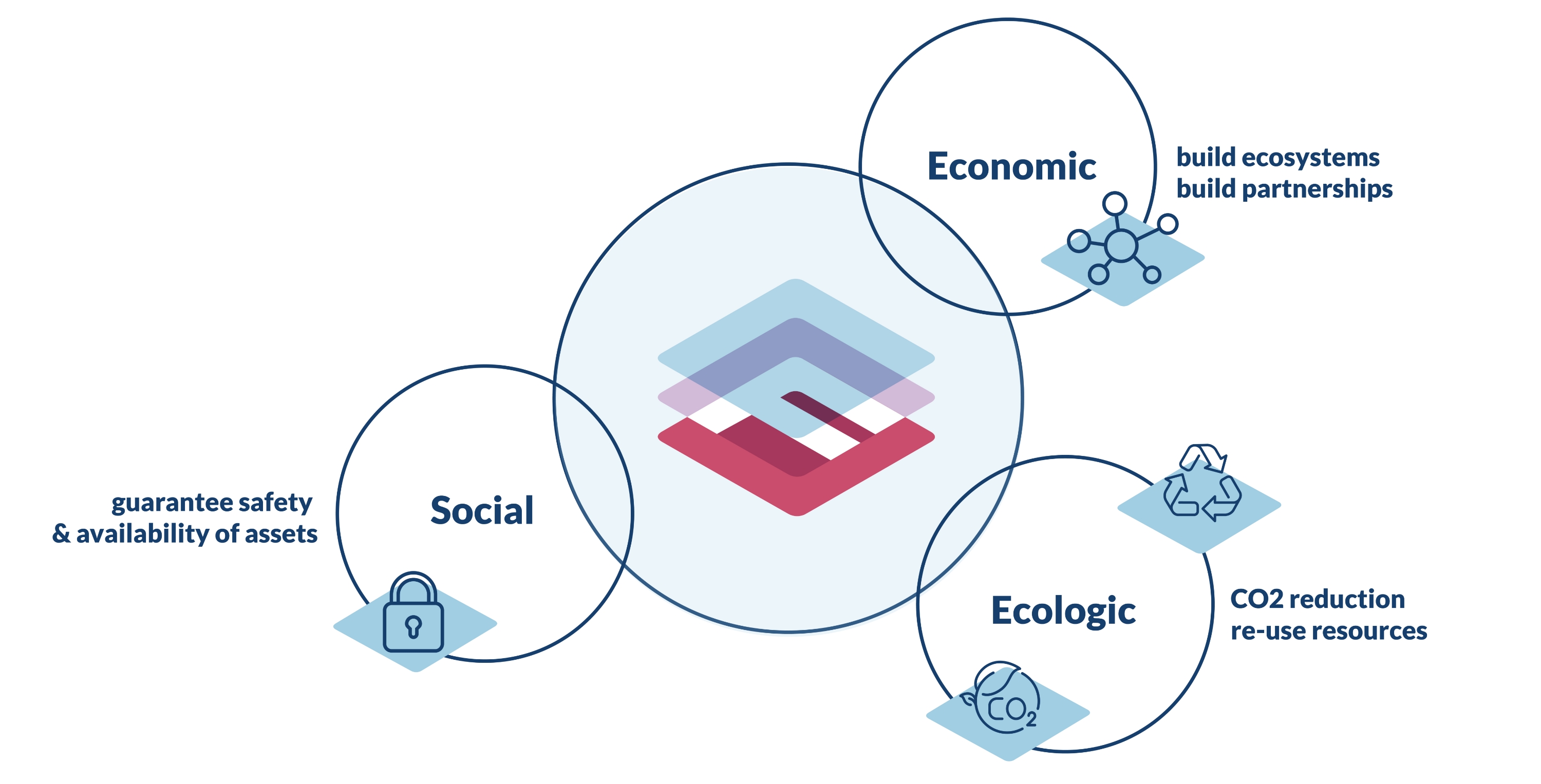


Act today for a sustainable tomorrow
As the built environment where we work, live & play is responsible for more than 40% of global C02 emission & waste production : we have a key to change the climate impact.
Furthermore we are an industry where benefits are not divided on an equal manner. The challenge of having so many stakeholders a long the way of a build asset, does not make the job easier.
To know where to make an impact we need to start changing the way we handle our physical assets.

The 3 pillars of sustainability

Where are the risk ?

30% of project staff time is lost, because they are looking for data or information
50% of relevant information is lost before the asset is becoming operational
90% of companies in the industry claim to be locked into legacy systems and find it difficult to re-use their information
Carbon & Material Accounting
Find out how Fundamend can change the ease of reporting about EU taxonomy, carbon footprint & material passports

Impact of data centric way of working on the built environment

Ecological Impact
Sustainability is not about being green or ecological alone. But we can not ignore the fact that the industry is responisble for more than 40% of CO2 emission and waste in the world. Resources are scarce and limited. For the construction industry, this brings challenges in the way we design, execute & maintain our assets. More specific : It’s about the efficient use, and re-usage of materials & building components. How can we now our assets inside out? What materials and where those materials are located in our asset portfolio? And how to have actionable data to make decions on our ecological impact.

Economical Impact
Construction today is all about adding value in the long term, developing infrastructure that sustains a way of living compatible with the future and creating digital and business ecosystems to realize this. That for one, is something we all learned from the pandemic. Imagine we did not have connectivity, or energy? What should our future world look like? How do we use and need spaces, infrastructure, connectivity?And how are we impacted if we do not rethink our legacy business models? How can data helps us getting better insights in these dynamics? As an industry we need to build collaborative ecosystems that will helps us overcome this challenge.

Social Impact
There is a human or social aspect where we should take responsibility. Critical assets should always be available and safe. Nobody is in need for new dramas of collapsing bridges, parking lots, badly maintained cable elevators,… That social dimension is a third pillar in our sustainable thinking. What is the status of these assets, where and when to invest and learn from the past to optimize the future concepts. We gain insights through data, and we should use them to steer our decision in a more rational way. Not only based upon experience in peoples mind.
Digitalisation is never the aim
It’s a means to an end.
It’s been said countless times before.
Every project has its own dataset & needs,
Every party involved steers and manages based on its own priorities.
Your data strategy and digital environment should facilitate and make those knowledge streams customised for whomever needing them.
Sustainability for data, meaning re-usability of data is at the core of Fundamend.

Too good to be true?
Contact us to discover how we can fundamentally improve your asset management
